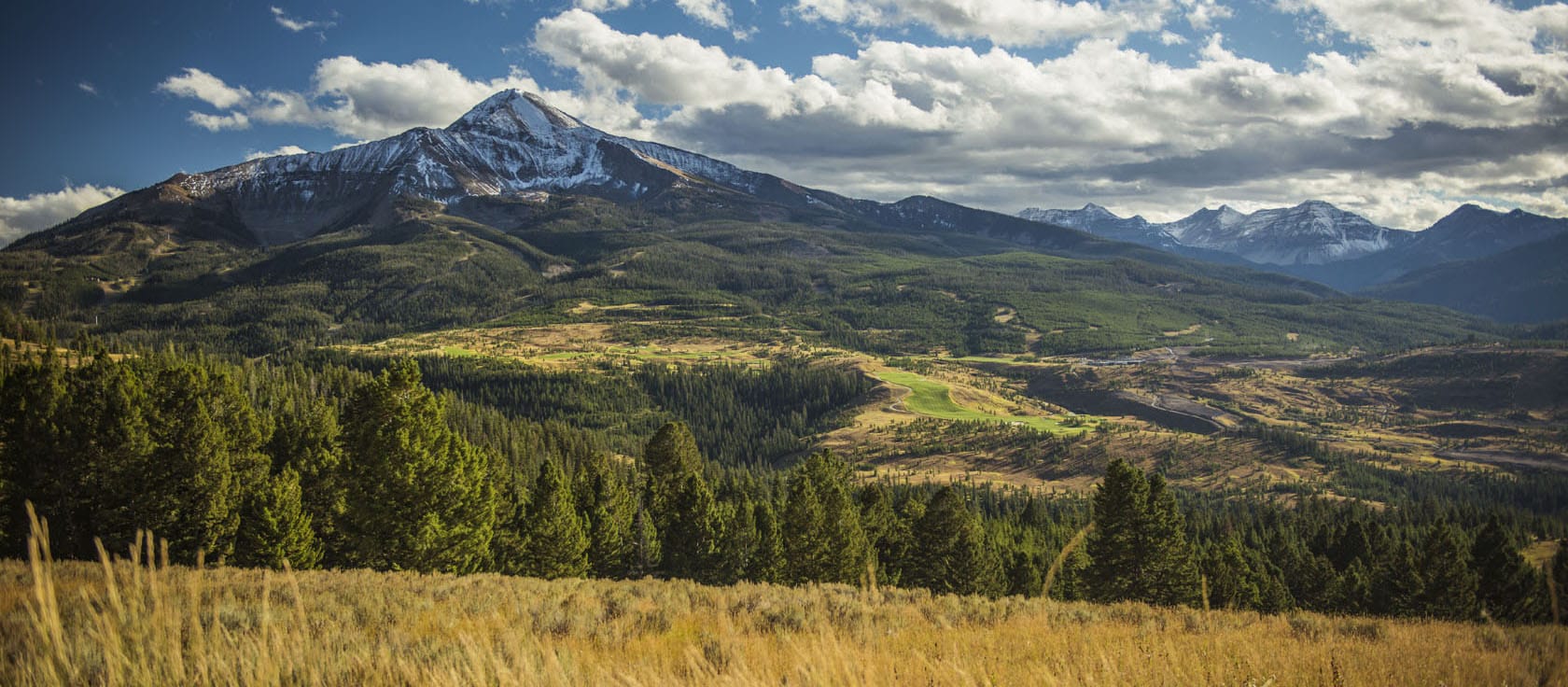Can You Benefit From The Placement Of A Conservation Easement?
By Richard W. Dickinson, Benchmark Advisors
It is always surprising to me how few people are familiar with conservation easements and the tax benefits provided. The enabling legislation was first enacted in the early 1980s, and while thousands of easements have been placed since that time, it is still a relatively unknown and/or misunderstood opportunity.
Unfortunately, when conservation easements make the news, it is typically with a highly negative bias and usually arises from the abuse of the system. Along with the negative press usually comes ample coverage indicating that it’s a tax loophole for the rich. Bad publicity notwithstanding, Congress has reaffirmed its enthusiasm for this concept as recently as December 2015, when the incentives for placing easements were increased.
In my view, it should not matter who places land into perpetual conservation easements. What matters is that we continue to set open space aside at a time when consideration of adding lands to our national parks and forests is not even on our country’s current agenda.
Below, we set forth some of the primary considerations in the placement of a conservation easement.
SOME DEFINITIONS
An Easement: An easement is the exchange of certain rights from the landowner to someone who does not own the land. Easements are typically used to provide governments, utilities, etc., with certain rights to use otherwise private property. Ownership of the land remains with the private property owner.
A Conservation Easement: A conservation easement is a perpetually binding restriction placed on land in favor of a qualified organization (usually a land trust), which prevents its development. Conservation easements are sometimes purchased by land trusts but are more often donated. The purpose of a conservation easement is designed to restrict certain activities on private land, most commonly some form of development. As the name implies, its primary purpose is to conserve natural or man-made resources.
Granting A Conservation Easement: Like other easements, only the owner of the property can grant a conservation easement on their property.
Determining Value Of The Conservation Easement: Most often, the value of the conservation easement is determined by an appraisal. The difference between the “as of right” appraisal and the appraisal of the proposed limited development determines the value as a charitable deduction.
Charitable Contribution: A properly structured conservation easement on qualifying land and donated to a qualified organization entitles the donor of the land to a charitable contribution equal to the value of the conservation easement as determined by a qualified appraiser. The charitable contribution allows the donor to reduce adjusted gross income (AGI) by the value of the easement, up to 50% in any given year if the land is appreciated property. Any charitable contribution amount that exceeds 50% of AGI can be carried forward for up to 15 additional years. By reducing a donor’s AGI, the amount of income on which taxes are paid is reduced for both federal and state calculations.
The Easement Holder: Most commonly, a conservation easement is held by a nonprofit entity that exists for the purposes of holding lands for conservation purposes. This entity is responsible for the annual monitoring and maintenance of the easement. Most often, this entity is a qualified Land Trust with considerable experience in monitoring conservation easements.
The Land Trust: A qualified organization with significant experience with conservation easements. The land trust takes on the responsibility to monitor and enforce the restrictions set out in the conservation easement document. While the land trust holds the conservation easement, the donor is still the owner of the land.
Public Access: An easement does not have to permit public access. The decision to allow public access is left to the individual property owner who places the easement on the property.
CAN YOU BENEFIT?
People are typically interested in placing conservation easements for one of two reasons:
- Farmer, rancher, or other landholder who simply wants to protect their property in perpetuity. Many are placed without consideration of the highest and best use that can yield the most tax benefit. Many landowners in this category do not consider that valuing their property for some type of development use can add a significant tax benefit.
The term “development” can take on numerous options, and the term “subdivision” can mean many things. One property we are aware of was able to be valued as a sporting club, with a significant increase in value due to the six miles of trophy fishing.
- Landowner/Developer who wants to undertake a limited development of their property with less development than they are entitled to build. This is common today, with many land development projects responding to buyer preferences for larger lots and more open space.
If you are interested in pursuing a conservation easement, you should first explore the potential easement benefits that can be achieved. Keep in mind that once a conservation easement is placed, it is in perpetuity.
IRS REQUIREMENTS
As with any program that provides a tax benefit, there are technical requirements to be followed when placing a conservation easement. It does not require IRS approval before you place an easement. You simply follow the guidelines, place the easement and claim the deduction on your next tax return. There are still a myriad of guidelines to be followed.
Conservation Purpose. A fundamental requirement to qualify for tax benefits under the IRS rules is that the property meet one of the following four tests of conservation purpose.
Under § 170(h)(4) of the Regulations, permitted “conservation purposes” include:
- The preservation of land areas for outdoor recreation by, or for the education of, the general public;
- The protection of the relatively natural habitats of fish, wildlife, plants, or a similar ecosystem;
- The preservation of open space (including farmland or forest land) where such preservation is for the scenic enjoyment of the general public or pursuant to a clearly delineated Federal, State, or local governmental conservation policy and will yield a significant public benefit;
- The preservation of a historically important land area or a certified historic structure.
Legal aspects. There is a multitude of legal requirements and considerations to qualify under the tax guidelines.
- Ownership entity if not owned personally.
- The requirement to hold for one year if the land is transferred into a new entity.
- Will the easement be held by a qualified organization or land trust?
- Many others that are often tripwires that the IRS can use to challenge the tax benefit.
Ownership Entity/Beneficiary. The beneficiary of the tax benefit is the individuals that own the land at the time the easement is placed. If the land is owned in an entity, it is preferred that the entity be an investment LLC with pass-throughs to the individuals in the entity.
Avoiding The Common Pitfalls. Here are some common pitfalls and mistakes when considering a conservation easement.
Can I use my plan to place a conservation easement to bargain with regulatory authorities for other development benefits? Quid pro quo or “getting something for something” is prohibited under the conservation easement regulations. A charitable contribution for a conservation easement will be disqualified if there is a quid pro quo of any kind.
If I am a developer, can I decide to place an easement on land I have subdivided and offered for sale? A developer or “dealer” is limited in the amount of tax benefit. The tax benefit is limited to the developer’s basis in his land.

VALUATION – PERHAPS THE MOST IMPORTANT CONSIDERATION
Most often, when we read of challenges to conservation easements, it is because the IRS has challenged the valuation and the amount of tax benefits. We consider a properly prepared and documented appraisal to be perhaps the most important factor when placing an easement.
Conservation Value can only be determined by a qualified appraiser familiar with conservation easement appraisals required under internal revenue code section 170 (h). An appraiser will take into account a number of factors in determining conservation value. Here are a few common questions about valuation:
Is the most important factor in arriving at value “As of right” or the type of development that is permitted on the property? Clearly, this is an important factor as it gives the maximum upside to a property’s potential development value.
Does the conservation value determined by the “as of right” determine the deduction that can be taken for tax purposes? No, there are a number of factors that need to be taken into account. The “as of right” determines what we commonly refer to as the “before” value (value before the conservation easement is placed). The “after” value is the value determined by appraisal after development is restricted by the placement of the easement. The difference in the two appraised values determines the value of the charitable contribution for tax purposes.
Does a project actually have to be “entitled” to be able to utilize the “as of right” plan? Not necessarily. If it can be established that there is sufficient evidence that the “as of right plan” would be approvable and the appraiser can document reasons why he feels the plan would be approvable, then the “as of right” plan can be utilized for valuation purposes.
How much of a factor is the time it takes to complete and sell out a project (Absorption Time)? Absorption time frequently has the biggest impact on the value. We find that today, this factor alone can discount the retail sales price by as much as 50%. A good rule is that any real estate that it is not projected to sell within the first seven years of a project contributes little value to the discounted cash flows and, therefore, to conservation easement value.
One way we can improve the absorption pace is to include a variety of products and prices. For example, an appraiser might find that there is limited demand for $100,000 lots and that the market has too much competition, but there would be high demand for larger estate lots in the $400,000 range. Merging these two product types could yield a higher absorption and, therefore, a higher overall value.
What are other factors an appraiser must take into account when arriving at values before and after the conservation easement is placed? Most importantly, the appraiser must have a firm basis for development costs verified by a third-party professional, usually a professional engineer. In addition, he must take into account the following:
- Cost of Sales
- Cost of Development
- Operating Expenses
- Developer Profit
- Physical Viability of The Land Plan
How does the actual purchase price of a property influence the value? An appraiser must take into account when the property was purchased and at what purchase price. If there is a wide variation between the purchase price and the value arrived at by development analysis, this variation must be reconciled before arriving at a final value.
What can be done once a property is purchased to increase its value and therefore increase the conservation value for tax purposes? Perhaps the most productive method for increasing the value of a particular property is creating a plan for development and getting that plan entitled. Other factors can be the improvement of the property in other ways through re-vegetation programs, the introduction of habitat, and shaping the property to be more suitable for development.
How do the values of comparable properties affect the value of my property? Values of comparable properties must be taken into account in arriving at the value of your property. However, there can be many factors taken into account in determining whether properties are, in fact, “comparable.” Locational factors are frequently a major consideration.
Do the comparables used for appraisal purposes have to be in close proximity to the project being appraised? Not necessarily, but the appraisals in the area of the project are important. Frequently, it can be shown that a particular product type or attribute of the project being appraised is unusual, and comparables outside the immediate area can better determine the appropriate value. An example of this is a particular property located in close proximity to a resort hotel. Comparable properties in the area do not have this particular attribute, and it is most appropriate to study other properties outside the area which are also in close proximity to a resort hotel. Sometimes these comparables extend to nationwide examples.
How does the appraiser work with the land planner to come up with the optimal result in the definition of highest and best use? The land planner defines the special attributes of a site from a physical planning standpoint (factors like topography, vegetation, soils, views, vistas, etc.). The appraiser defines the special attributes of the site, taking into account special value considerations (factors like location, area competition, and unique product types) that might be suitable based on market analysis.
As long as an appraiser is qualified to value conservation easements in accordance with the IRS code, does this value always determine the final tax benefit? No. The tax benefit determined by the appraiser is always subject to challenge by the IRS. There are numerous requirements that must be followed to validate the conservation value. In addition, we frequently recommend that a second appraiser review the work of the initial appraiser to further validate the values and show the IRS that the taxpayer is willing to go the extra mile to validate the value.
Once the conservation value is determined with both the” before” and “after” appraisals, is this the amount that can then be deducted from taxes? No. The value determined by appraisal is taken on a taxpayer’s return as a charitable contribution, so the benefit is determined by their tax bracket. Additionally, there are restrictions on how much you can take as a charitable contribution. In December 2015, Congress made permanent the easement incentive, allowing 50% of the taxpayer’s adjusted gross income in the initial year of the easement with a carry forward of 15 additional years.
PLACING THE EASEMENT
Once you have decided to place the easement, there are a number of considerations, each important because they determine your rights and responsibilities once the easement is placed.
Choosing A Land Trust. There are over 1,000 land trusts in the United States. Some are national in scope, like The Nature Conservancy, while others have a statewide or regional focus. Still, others are single-purpose land trusts that focus on things like the protection of a specific watershed.
Do research on land trusts that are active in your area. Interview them and make sure you are comfortable that you are entering into a partnership that you can live with “in perpetuity.”
Negotiating the Terms of the Easement. Land trusts will typically have a “model” easement or template that they work with to begin the terms and conditions that will govern the future restrictions for your particular easement. Each easement is different and specifically addresses “permitted and prohibited uses.” Each easement is negotiable, and you should be comfortable with the terms and conditions.
Baseline Documentation. In conjunction with the easement document, a baseline documentation study will be undertaken that sets forth the unique characteristics of a conservation easement. A baseline study is frequently undertaken by the land trust that will hold your easement but can also be a document provided by a third-party consultant. The baseline provides important details of an easement when it is placed and serves as a reference for the future when determining if the conditions of the easement are being upheld.
Funding the Endowment/Annual Monitoring. The land trust that holds your easement will be required to monitor the easement annually. This is typically done by land trust staff but can sometimes be carried out by a third-party consultant. Land trusts will typically require some form of endowment or contribution that offsets the cost of this annual monitoring.
CHOOSE THE RIGHT TEAM
Each year there are thousands of easements placed in the US. An overwhelming percentage are placed, reviewed, and never challenged. Done properly with great attention to detail, you should expect a good result. Choose the right team of experts to help you with the myriad of detailed requirements to qualify. Make sure you get quality advice and commitment to detail. Experienced legal help, appraiser, tax consultant, land planner, and the right land trust all play an important part.
When you do place your easement, you’ll be gratified to know that you have contributed to the more than 56 million acres of protected land and permanent easement open space. Your investment in the best team is well worth it.
For additional information on this topic, please contact the author, Richard W. Dickinson, with Benchmark Advisors at [email protected]





